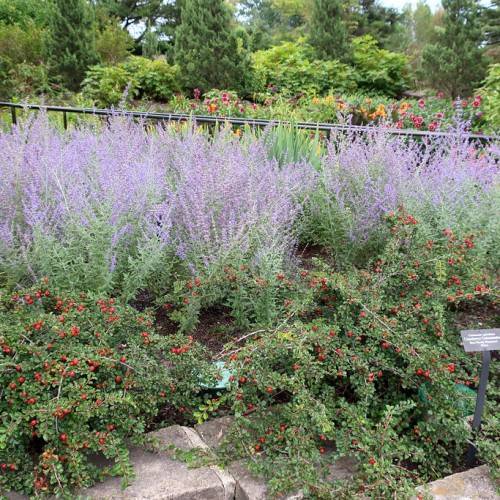
Russian sage
Perovskia atriplicifolia 'Rocketman'
Cycle:
Herbaceous Perennial
Watering:
Minimum
Hardiness Zone:
5 - 9
Flowers:
Flowers
Sun:
Full sun
Leaf:
Yes
Growth Rate:
High
Maintenance:
Low
Drought Tolerant:
Yes
Care Level:
Medium
watering
Russian sage thrives in full sun and requires regular watering. During the spring and summer, water the plant deeply once or twice a week depending on the amount of rainfall and the temperature. Make sure you are thoroughly saturating the soil around the plant. During the fall and winter, water the plant only when the top few inches of soil are dry. Don't worry if the plant's foliage looks wilted during the hot summer months, as Russian sage naturally has a tendency to look like it's wilting even though it's healthy.
sunlight
Russian sage (Perovskia atriplicifolia 'Rocketman') enjoys full sun, with at least 6 hours of direct sunlight each day. This species does best in well-drained soils, and should be planted in a location that offers some protection from strong winds. It prefers drier soil conditions and does not require much fertilization. For best results, water the plant deeply once every 2 to 3 weeks during the summer months, and avoid wetting the foliage. During the winter months, supplemental water is not necessary.
pruning
Russian sage (Perovskia atriplicifolia 'Rocketman') should be pruned in late winter or early spring, before growth begins. Prune only the damaged, dead, or unruly branches and avoid taking out more than a third of the plant annually, since it may struggle to recover. Pruning should be done by removing individual stems back to a side shoot or to the main stem, just above the leaves. Pruning in late summer or early fall can damage the plant.
